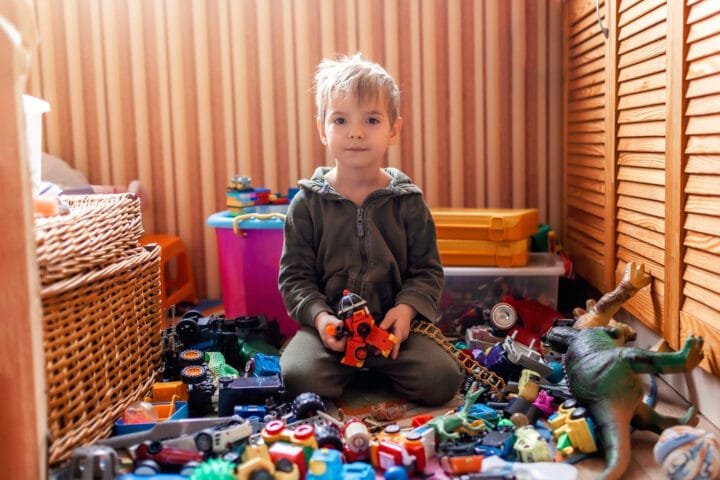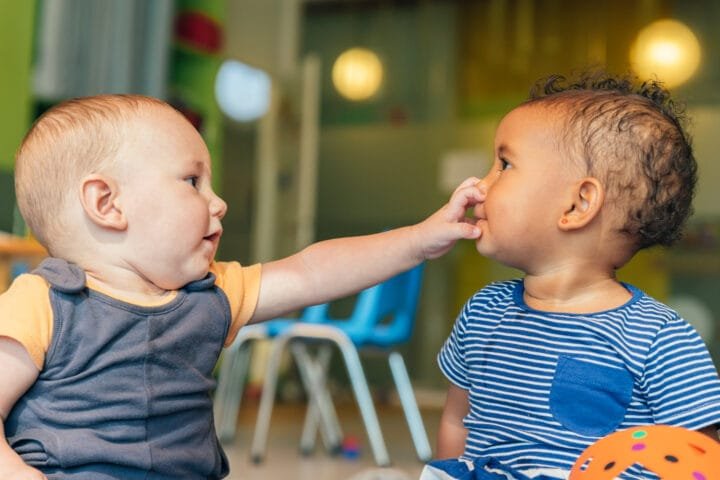Decoding the Decibels: A Parent’s Guide to Understanding and Navigating “The Sound of a Teen Girl Angry”
My Daughter Turned into a DRAGON (and How I Learned to Speak Her Language)
Ever feel like you’re living with a tiny, hormonal dragon? One minute, she’s your sweet angel; the next, she’s breathing fire and slamming doors. Yep, I’m talking about the sound of a teen girl angry. It’s a symphony of sighs, screams, and the occasional (okay, frequent) door slam that can leave any parent feeling bewildered, frustrated, and maybe even a little scared.
Trust me, I’ve been there. My daughter, once a giggling toddler, transformed into a master of the eye roll and a virtuoso of the silent treatment seemingly overnight. It felt like I needed a translator or maybe a suit of armor. But here’s the good news: you’re not alone, and it is possible to navigate this tumultuous phase without losing your mind (or your voice from yelling back). This is more than just a guide; it’s a lifeline. We are going to break the code of the sound of a teen girl angry. Are you ready?
The Soundscape of Anger: Identifying the Different Levels of Intensity
Navigating the teenage years with a daughter often feels like traversing an emotional minefield. The sounds of anger can range from barely perceptible whispers to explosive outbursts, each carrying its own set of triggers and underlying emotions. We found it crucial to decode these sounds, not just to maintain peace in the household but to understand our daughter’s emotional landscape.
Level 1: The Undercurrent of Frustration (Low Intensity)
This is where it all begins. The subtle, almost missable cues. But trust me, they’re essential! Low-intensity expressions typify it.
- Sounds: Think of those little huffs, the exasperated sighs, the muttering under her breath. Maybe she’s giving you short, clipped answers. It’s like a simmering pot, just starting to bubble.
- Underlying Emotions: This stage usually signals annoyance, irritation, or mild frustration. Maybe she’s feeling unheard of or dismissed. It’s like a gentle warning sign.
- Common Triggers: These are the everyday annoyances. Think: being asked to do chores when she’s engrossed in something, struggling with homework, or feeling like you’re nagging. My daughter used to hiss like a deflating tire when I’d ask her to unload the dishwasher. It took everything in me not to laugh. Minor inconveniences can feel monumental to a teenager, and these small sounds are their way of expressing their displeasure without escalating into a full-blown conflict.
- What to do: This stage calls for subtle intervention. Acknowledge her feelings with a simple, “You seem frustrated. Is everything okay?” Offering to help or simply giving her space can prevent the situation from escalating. It’s about showing her that we’re attuned to her emotions, even the subtle ones.
Level 2: The Rising Tide (Medium Intensity)
Things are starting to heat up. The volume increases, both literally and figuratively.
- Sounds: Now we’re talking about a raised voice, a sharper tone. Sentences become shorter and more pointed. And then there’s the door slam – a classic teen move! It’s a clear signal that things are escalating.
- Underlying Emotions: At this level, she’s likely feeling disrespected, invalidated, or controlled. Maybe she’s feeling overwhelmed and needs some space. There’s a sense of injustice or not being understood that fuels this level of anger.
- Common Triggers: Arguments are a big one here, especially about rules, privileges, or curfews. Being told “no” can be a huge trigger. Or maybe she feels like you’re not listening to her side of the story. I remember one epic battle over a concert she wanted to attend. Let’s just say there were a lot of raised voices and a very dramatically slammed door. This level often arises from conflicts over autonomy and independence. Teenagers are striving to assert their individuality, and clashes with parental authority are common.
- What to do: At this juncture, maintaining our composure becomes even more critical. Instead of meeting her heightened emotions with our own, we try to de-escalate by validating her feelings (“I understand you’re upset because…”). Offering choices within reasonable limits can help her feel more in control.
Level 3: The Storm Unleashed (High Intensity)
This is the big one. The full-blown meltdown. Hold on tight!
- Sounds: We’re in the realm of screaming, yelling, crying, and maybe even some harsh words. It’s like a volcano erupting. It’s loud, it’s messy, and it can be pretty scary.
- Underlying Emotions: This is where deep hurt, intense anger, betrayal, or feelings of helplessness come out. She might feel entirely out of control. It’s important to remember that this isn’t just about the immediate situation; it might be the culmination of many more minor frustrations.
- Common Triggers: These are usually the major conflicts. Think big disappointments, serious disagreements, or feeling deeply wronged. Maybe it’s a fight with a best friend, a bad grade, or a perceived betrayal. One time, my daughter found out a friend had been talking behind her back. The resulting explosion was…memorable. These situations often touch on core issues of trust, identity, and belonging.
- What to do: When the storm hits, our primary role is to ensure safety—both hers and ours. Trying to reason with her in this state is futile. Instead, we focus on staying calm and reassuring her that we’re there for her when she’s ready to talk. Sometimes, physical presence without words is the most comforting approach.
The Silent Treatment
- Description: The silent treatment is a form of passive-aggressive behavior where a person withdraws and refuses to communicate verbally. It’s a way of expressing anger, hurt, or dissatisfaction without confrontation. While it might seem less intense than yelling or door-slamming, it can be just as powerful and damaging to relationships.
- Underlying Emotions: This often indicates a feeling of being deeply hurt, unheard, or misunderstood. It can also be a way of punishing the other person or trying to gain control of the situation. Silent treatment often stems from a place of vulnerability and a lack of practical communication skills.
- Common Triggers: This behavior might be triggered by feeling ignored, dismissed, or betrayed. It can also be a response to a perceived injustice or a situation where the person feels they have no other way to express their anger or frustration. It’s like a defense mechanism.
- What to do: Patience is key. Let her know you are there for her when she is ready to talk and mean it.
Beyond the Noise: Unpacking the Triggers Behind “The Sound of a Teen Girl Angry”
Understanding the sound of a teen girl angry is only half the battle. The real work comes in figuring out why she’s furious. And trust me, it’s rarely just about the dirty dishes in the sink.
The Teenage Brain: Hormones, Development, and Emotional Volatility
Let’s be honest: teenage brains are under some serious construction. It’s like a rollercoaster mixed with a tornado.
- Puberty and Hormonal Fluctuations: This is a big one. Those surging hormones can make emotions feel vast and unpredictable. One minute, she’s laughing; the next, she’s in tears. It’s not her fault; it’s biology! According to a study by the National Institute of Mental Health, the hormonal changes during puberty can significantly impact mood and behavior, leading to increased irritability and emotional sensitivity.
- Brain Development: Here’s a fun fact: the prefrontal cortex, the part of the brain that handles impulse control and decision-making, is still developing well into the twenties. So, when your teen seems irrational or impulsive, it’s because her brain is still learning! A study published in the journal “Developmental Science” found that adolescents are more likely to engage in risky behaviors due to the slower maturation of the prefrontal cortex compared to the limbic system, which processes emotions.
Common Triggers: A Deep Dive into Everyday Battles
Every family is different, but there are some universal triggers that can set off the sound of a teen girl angry.
- The Quest for Independence: This is a classic. She wants to make her own choices, but you still see her as your little girl. It’s a constant push and pull. Finding that balance is key. Teenagers are striving to establish their own identities and make their own decisions. This natural desire for autonomy often clashes with parental guidance and rules.
- Social Pressures and Peer Relationships: Friends are everything at this age. Fights with friends, social drama, feeling left out – these can all trigger major meltdowns. Social media adds a whole other layer of complexity. According to a report by the Pew Research Center, 95% of teens have access to a smartphone, and 45% say they are online almost constantly. This constant connectivity can amplify social pressures and contribute to anxiety and stress.
- Academic Stress and Performance Anxiety: School can be a pressure cooker. Grades, tests, college applications – it’s a lot to handle. And sometimes, that pressure boils over. The American Psychological Association reports that teens often experience higher levels of stress than adults, with school being a primary source of stress.
- Family Dynamics and Communication Styles: How you communicate as a family can make a big difference. If your home is full of yelling, or if she feels like she’s not being heard, it can create a breeding ground for anger. Families with open communication and mutual respect tend to have fewer instances of extreme anger.
- Feeling Unheard or Invalidated: This is a big one. When teens feel like their opinions don’t matter, or their feelings are being dismissed, it can lead to significant frustration. Everyone wants to feel seen and heard, especially teenagers. It’s crucial to validate their emotions, even if you disagree with their behavior.
- Perceived Unfairness or Injustice: Teenagers have a strong sense of justice. If they feel like they’re being mistreated, whether it’s real or perceived, it can trigger intense anger. This could be anything from sibling rivalry to rules they deem unreasonable. A sense of fairness is vital in any relationship.
- Stress and Overwhelm: Sometimes, it’s just too much. Juggling school, friends, extracurriculars, and family obligations can be overwhelming. When teens feel like they can’t cope, anger can be the result. It’s like a pressure valve releasing built-up tension.
Identifying Individual Triggers: The Importance of Observation and Communication
This is where you become a detective. You need to pay attention to the patterns.
- Paying Attention to Patterns: Start noticing when your daughter gets angry. What happened right before? What was the context? Keeping a journal can actually be really helpful. Over time, you might start to see some clear patterns emerge. Look for recurring themes or situations that consistently trigger her anger.
- Open and Honest Conversations: Create a safe space where she feels comfortable talking to you about her feelings. Ask open-ended questions, and really listen to her answers. This can be tough, especially if she’s not used to opening up, but it’s so important. The key is to listen without judgment and to validate her emotions.
Responding with Empathy: Strategies for De-escalation and Support
Okay, so you’ve identified the sounds and the triggers. Now what? How do you actually deal with the sound of a teen girl angry without making things worse?
In the Heat of the Moment: Immediate Response Strategies
This is where the rubber meets the road. These are your go-to moves when things are getting heated.
- Staying Calm: The Power of Self-Regulation: This is probably the hardest, but most important thing you can do. When your teens are yelling, your instinct might be to yell back. But that just adds fuel to the fire. Take deep breaths. Count to ten. Do whatever you need to do to stay calm. Your calm is contagious (eventually). Remember, you’re the adult in the situation. It models emotional regulation for your teen.
- Active Listening and Validation: Even if you disagree with why she’s angry, try to understand that she’s furious. Use phrases like, “I hear that you’re upset” or “It sounds like you’re really frustrated.” This shows her that you’re taking her seriously. Validation doesn’t mean agreement; it means acknowledging her feelings as authentic and valid.
- Setting Boundaries with Respect: It’s okay to set limits. You can say, “I understand you’re angry, but it’s not okay to yell at me.” Do it calmly and firmly. This teaches her that while her feelings are valid, disrespectful behavior is not acceptable. Boundaries are essential in any healthy relationship.
- Knowing When to Disengage: Sometimes, the best thing you can do is walk away. If things are getting too heated, it’s okay to say, “I need a few minutes to cool down. Let’s talk about this later.” This gives both of you a chance to calm down and prevents the situation from escalating further. It’s not giving in; it’s choosing your battles wisely.
- Giving Space: Sometimes, teens just need to be alone to process their emotions. Respect that needs for space. Let her know you’re there for her when she’s ready, but don’t force her to talk before she’s ready. It shows you respect her need for autonomy.
- Avoiding Escalation: Resist the urge to lecture, criticize, or bring up past grievances. Stick to the issue at hand and avoid using inflammatory language. Your goal is to de-escalate, not to win the argument. Focus on the present, not the past.
After the Storm: Repair, Reconnection, and Reflection
Once things have calmed down, it’s time to pick up the pieces and move forward. This is crucial for maintaining a healthy relationship.
- Choosing the Right Time to Talk: Don’t try to force a conversation immediately after a blow-up. Wait until both of you have had a chance to cool down and reflect. The right time might be later that day or even the next day. Choose a time when you can both talk calmly and openly.
- Apologizing and Taking Responsibility: If you overreacted or said something you regret, apologize. This shows your daughter that you’re willing to own your mistakes and that it’s okay to apologize. Taking responsibility for your actions, even as a parent, is a powerful lesson in humility and accountability. It models the behavior you want to see in her. Remember, relationships are a two-way street.
- Collaborative Problem-Solving: Work together to find solutions to recurring issues. Ask her for her input. This shows her that you value her opinion and that you’re willing to work as a team. Brainstorm solutions together and be open to compromise. This empowers her and teaches them valuable problem-solving skills.
- Rebuilding Trust: This takes time and consistency. Follow through on your promises. Be there for her when she needs you. Show her that you can be trusted, even when things are tough. Trust is the foundation of any strong relationship. It is earned through consistent actions and open communication.
Teaching Emotional Intelligence: Equipping Your Daughter with Healthy Coping Skills
This is where we move from reacting to preventing. Teaching your daughter how to manage her emotions is one of the greatest gifts you can give her. It is not just about managing anger. It is about building a foundation for emotional well-being that will serve her for life.
Building Emotional Vocabulary: Naming and Understanding Feelings
You can’t manage what you can’t name.
- Expanding Emotional Literacy: Help your daughter develop her emotional vocabulary beyond “mad,” “sad,” and “happy.” Introduce her to words like “frustrated,” “disappointed,” “anxious,” “resentful,” etc. The more words she has to describe her feelings, the better she’ll be able to understand and communicate them. A rich emotional vocabulary allows for more nuanced self-expression.
- Modeling Healthy Expression: Share your feelings with her (in an age-appropriate way, of course). Let her see you healthily handling your emotions. Talk about how you deal with stress, frustration, and disappointment. Children learn by observing. Your actions speak louder than words. Show her what a healthy emotional expression looks like.
Developing Coping Mechanisms: Tools for Managing Intense Emotions
Everyone needs healthy ways to cope with difficult emotions. Here are a few to explore with your daughter:
- Mindfulness and Relaxation Techniques: Deep breathing exercises, meditation, and progressive muscle relaxation can be incredibly helpful for calming down and managing stress. Tons of apps and online resources can guide you through these techniques. Studies have shown that mindfulness practices can reduce stress and improve emotional regulation in adolescents. These practices teach her to focus on the present moment.
- Physical Activity and Exercise: Exercise is a fantastic stress reliever. Encourage your daughter to find physical activities she enjoys, whether it’s dancing, running, swimming, or team sports. Physical activity releases endorphins, which have mood-boosting effects. It provides a healthy outlet for pent-up energy and frustration.
- Creative Outlets: Art, music, writing, and other creative activities can provide a powerful outlet for emotions. Encourage your daughter to explore different creative avenues and find what resonates with her. This could be anything from painting to playing a musical instrument to writing in a journal. Creative expression allows for the non-verbal processing of emotions.
- Seeking Support from Others: It is expected to look for help. It is crucial to reinforce the idea that seeking support is a sign of strength, not weakness. Encourage your daughter to talk to trusted friends, family members, or a therapist when she’s struggling. Let her know that she doesn’t have to go through it alone. Having a support system is crucial for navigating difficult times.
Promoting Assertive Communication: Expressing Needs Respectfully
This is about teaching your daughter to stand up for herself without resorting to aggression or passive aggression. Assertive communication is a skill that will benefit her in all areas of life.
- Teaching “I” Statements: This is a classic communication technique. Instead of saying, “You always interrupt me!” (which is blaming and likely to trigger defensiveness), teach her to say, “I feel frustrated when I’m interrupted because it makes it hard for me to express my thoughts.” “I” statements allow her to express her feelings and needs without attacking the other person. This promotes understanding and reduces conflict. It focuses on personal experience rather than placing blame.
- Role-Playing and Practice: Practice using “I” statements in different scenarios. Role-playing can help her feel more comfortable and confident using this technique in real-life situations. You can even make it a game! The more she practices, the more natural it will become. Practice builds confidence and makes it easier to use these skills in the heat of the moment.
When to Seek Professional Help: Recognizing Warning Signs
Sometimes, despite your best efforts, outside help is needed. It’s essential to recognize the signs that your daughter might be struggling with something more serious than typical teenage angst. It’s okay to ask for help.
Frequency, Intensity, and Duration of Angry Outbursts
- How often is she getting angry? Is it happening every day? Several times a week?
- How intense are the outbursts? Are they becoming more violent or destructive?
- How long do they last? Is she staying angry for hours or even days?
Answering yes to these questions does not necessarily mean there is a problem, but frequent, intense, and prolonged anger can be a sign of underlying issues that need to be addressed. It’s essential to consider the overall context and any other changes in her behavior.
Destructive Behaviors
This is a serious red flag.
- Self-Harm: Any form of self-harm, such as cutting or burning, is a sign that your daughter is in severe distress and needs professional help immediately.
- Aggression Towards Others: If her anger is leading to physical fights or violence towards others, it’s time to seek help.
- Property Damage: Destroying property beyond the occasional door slam can indicate a problem with anger management.
These behaviors indicate a need for professional intervention to ensure her safety and the safety of others. Do not hesitate to reach out for help if you observe these signs.
Impact on Daily Life and Relationships
- Is her anger affecting her schoolwork? Is she skipping classes or failing to complete assignments?
- Is she withdrawing from friends and family? Is she isolating herself or losing interest in activities she once enjoyed?
- Are her relationships suffering? Is she constantly fighting with friends or family members?
When anger starts to impact her daily life and relationships negatively, it’s a sign that professional help may be needed. It suggests that her coping mechanisms are insufficient.
Signs of Underlying Mental Health Issues
Sometimes, anger can be a symptom of an underlying mental health condition.
- Depression: While we often think of depression as sadness, it can also manifest as irritability and anger, especially in teenagers.
- Anxiety: Excessive worry and fear can sometimes present anger or irritability.
- Other Conditions: Conditions like bipolar disorder, oppositional defiant disorder (ODD), and intermittent explosive disorder (IED) can also involve significant anger issues.
If you suspect an underlying mental health issue, it’s crucial to seek a professional evaluation. A mental health professional can provide an accurate diagnosis and recommend appropriate treatment.
Where to Find Help:
- Therapist or Counselor: A therapist can provide individual therapy for your daughter and family therapy for the whole family.
- School Counselor: School counselors can offer support and resources.
- Psychiatrist: A psychiatrist can diagnose mental health conditions and prescribe medication if needed.
- Support Groups: Support groups for teens and parents can provide a sense of community and shared experience.
Remember: Seeking professional help is not a sign of failure as a parent. It’s a sign of strength and love. You’re doing what’s best for your daughter and your family. It takes courage to ask for help, and it’s one of the most important things you can do.
Conclusion: A Journey, not a Destination
Navigating the turbulent waters of raising a teenage daughter, especially when confronted with the sound of a teen girl’s anger, is a continuous journey of learning, adapting, and growing—both for us as parents and for our daughters. It’s a path filled with challenges, yes, but also immeasurable rewards. There were days when I felt like I was failing, days when the yelling and the door slams seemed endless. But through it all, I learned to listen more, to empathize more deeply, and to communicate more effectively.
This guide has provided a roadmap, outlining the various intensities of teenage girl anger, the triggers that fuel these emotions, and the strategies for responding with empathy and understanding. We’ve delved into the importance of teaching emotional intelligence, equipping our daughters with the tools they need to navigate their inner worlds and express their needs constructively.
This journey is about building bridges of understanding and connection that will last a lifetime. It’s about fostering a relationship where your daughter feels safe, heard, and loved, even when her emotions are running high. And, perhaps most importantly, it’s about recognizing that amidst the storms, there are moments of profound growth, resilience, and, ultimately, a deepening of the bond between parent and child. This is a phase, and like all phases, it will pass. What remains is the relationship you built during these years. Cherish the good moments, learn from the difficult ones, and never stop believing in the fantastic young woman your daughter is becoming.
Recommend Books
This book provides an excellent framework for understanding the developmental stages teenage girls go through. Damour, a clinical psychologist, explains the common challenges girls face and offers practical advice for parents on how to support them. It touches on emotional regulation, social pressures, and the importance of fostering independence. The book gives insight into teen girl’s development.
“The Whole-Brain Child: 12 Revolutionary Strategies to Nurture Your Child’s Developing Mind” by Daniel J. Siegel, M.D., and Tina Payne Bryson, Ph.D.
Although not explicitly focused on teenagers, this book provides valuable insights into brain development and how it affects emotions and behavior. It offers practical strategies for helping children (and teens) develop emotional intelligence and self-regulation. The authors use real-life examples.
“How to Talk So Teens Will Listen & Listen So Teens Will Talk” by Adele Faber and Elaine Mazlish
This is a classic communication guide for parents of teenagers. It offers practical techniques for improving communication, resolving conflicts, and fostering cooperation. The authors use everyday language.
“Queen Bees and Wannabes: Helping Your Daughter Survive Cliques, Gossip, Boyfriends, and the New Realities of Girl World” by Rosalind Wiseman
This book delves into the social dynamics of teenage girls, exploring the pressures, conflicts, and challenges they face in their peer relationships. It provides insights into how social dynamics can impact a teen’s emotional well-being and offers guidance for parents on how to support their daughters.
“The 7 Habits of Highly Effective Teens” by Sean Covey
This book, aimed at teenagers themselves, is an excellent resource for teaching personal responsibility, goal-setting, and effective communication. It empowers teens to take control of their lives and develop healthy habits. This is an excellent book for personal development.
FAQs
I hear you! It’s like walking on eggshells sometimes, right? It’s actually pretty standard for teenagers to get worked up over things that seem minor to us. Their brains are still developing, hormones are raging, and they’re dealing with a lot of pressure. Think of it like this: their emotions are like a pot on the stove, and sometimes, the heat is turned up way too high. That said, if the anger is constant, super intense, or starts interfering with her daily life (school, friends, etc.), it might be worth talking to a counselor or therapist. They can help her learn healthy ways to manage those big feelings. Don’t be afraid to reach out for professional help.
The classic door slam! It’s like a teenager’s way of saying, “I need space!” Honestly, the best thing to do is to let her have that space. It is tempting to barge after her. Resist! Give her some time to cool down. Later, when things are calmer, you can talk to her about what happened. You can say something like, “I noticed you were upset earlier and slammed the door. Want to talk about it?” The key is to approach her with empathy, not anger. She will be ready to talk eventually.
Ugh, that’s a tough one. It feels like a power struggle, doesn’t it? Teenagers are all about independence, so they often push back against the rules. One thing that helped me was involving my daughter in creating the rules. When they feel like they have a say, they’re more likely to buy in. Also, try to explain the why behind the rules. Instead of just saying, “No phones at the dinner table,” try, “I want us to have some quality family time without distractions.” And remember, choose your battles. Some rules are non-negotiable.
That’s the million-dollar question! It’s all about giving them the tools they need. First, help her identify her feelings. Teach her words like “frustrated,” “disappointed,” and “resentful” so she can express herself more clearly. Second, encourage healthy coping mechanisms. Exercise, deep breathing, journaling, listening to music – these can all help. Finally, model healthy anger management yourself. Let her see you constructively handling your own emotions. Monkey see, monkey do! We are their first role model.
Trust your gut. If you’re worried, there’s no harm in seeking help. Specifically, if her anger is becoming very frequent and very intense, or if it’s leading to destructive behaviors (like hurting herself or others), it’s time to call in a professional. A therapist can help her understand her anger, develop coping strategies, and improve her communication skills. They can also help you as a parent learn how to support her better. There is no shame in asking for help. Remember, you are not alone!
Related Posts














































































